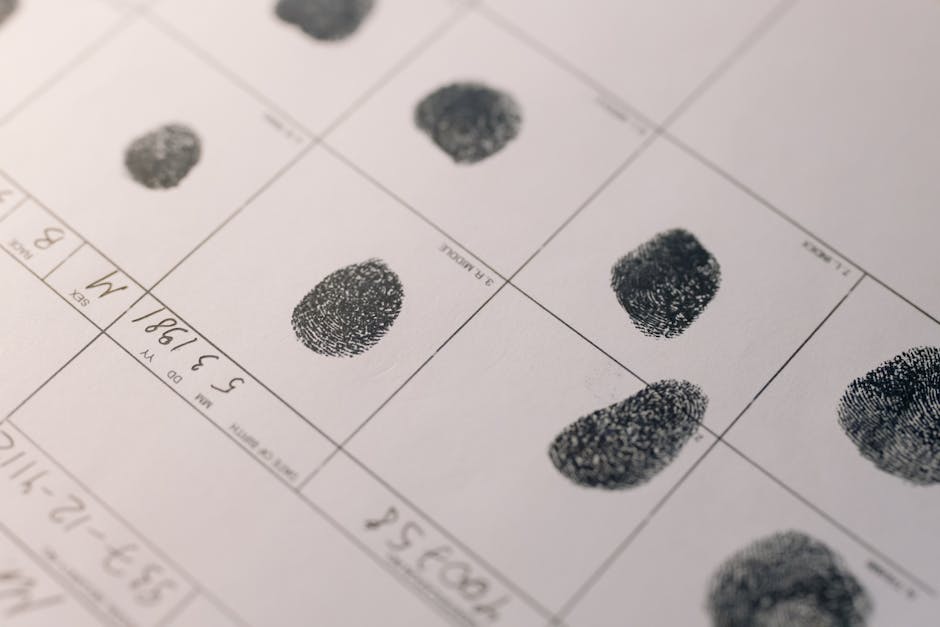Decode Biometric Data’s Legal Implications: Know Your Rights!
In the digital age, the term "biometric data" isn't just a technical jargon; it’s rapidly becoming a buzzword in legal discussions, consumer safety, and personal privacy. Whether you’re scanning your fingerprint to unlock your phone or using facial recognition to access secure services, every interaction introduces a whirlwind of legal implications and potential risks. As conversations deepen about how our biometric identifiers are being collected, stored, and processed, understanding your rights becomes paramount. Join us as we decode the fascinating yet complex legal landscape surrounding biometric data, exploring both rights and future protections you need to know to safeguard your identity.
The Rise of Biometric Data: A Quick Overview
Biometric data includes physical, physiological, and behavioral characteristics that can be used to identify individuals—think fingerprints, facial recognition, voice patterns, and even gait analysis. Its application has skyrocketed, with businesses and governments relying on biometrics for security, access control, and personalization. According to a recent report by the International Association for Privacy Professionals, the biometric market is projected to reach $70 billion by 2025—a testament to its increasing prevalence in our everyday lives.
Despite its advantages, the unregulated nature of biometric data raises pressing concerns about privacy, security, and consent. Are you aware of your rights when it comes to biometric data collection? Let's delve deeper into these legal implications.
Understanding Your Rights with Biometric Data
The Legal Framework Surrounding Biometric Data
Various jurisdictions are beginning to implement laws that govern how biometric data is handled. The Illinois Biometric Information Privacy Act (BIPA) is one of the most notable examples in the U.S., requiring companies to obtain consent before collecting biometric information. Violations can result in significant penalties. However, legal protections vary widely globally, leaving many consumers exposed.
In Europe, the General Data Protection Regulation (GDPR) explicitly categorizes biometric data as "sensitive personal data," which requires stringent protections and consent for processing. Whether you’re living in the U.S., Europe, or elsewhere, it’s crucial to be informed about local regulations that affect your biometric rights and responsibilities.
Collecting Biometric Data: Informed Consent is Key
Informed consent is a cornerstone concept in biometric data collection. Before organizations collect your biometric information, they must inform you of how it will be used, stored, and potentially shared. This includes explaining the risks associated with data breaches and unauthorized access. When engaging with new technologies, ask questions and understand the privacy policies involved.
Many companies fail to communicate these aspects clearly, resulting in consumers unknowingly surrendering their rights. Familiarize yourself with the fine print and ensure you understand what you’re agreeing to before sharing your biometrics.
What Happens if Your Data is Compromised?
The risks associated with biometric data are significant. Unlike passwords or pin codes, biometric identifiers are unique to you and cannot be changed if compromised. In instances of a data breach, your biometric data could be used maliciously for identity theft or unauthorized access.
Understanding legal recourse in such situations is crucial. Depending on governance in your jurisdiction, you may have the right to sue if your biometric data is mishandled. Organizations like the Electronic Frontier Foundation provide excellent resources for affected individuals to understand their rights better.
Potential Risks Inherent in Biometric Data
1. Misuse and Unauthorized Access
With advancements in technology, the potential for the misuse of biometric data is a growing concern. Once your biometric data is compromised, it becomes a permanent vulnerability. Cybercriminals can exploit this for fraudulent activities, and legal frameworks may not adequately protect you.
2. Discrimination and Profiling

While biometric technologies can improve efficiency, they also risk facilitating discriminatory practices. Research shows that algorithms involved in facial recognition can have lower accuracy rates among certain demographic groups, leading to misidentification. This could have severe legal consequences, from wrongful arrests to job discrimination, raising questions about liability and compliance.
3. Lack of Transparency

Many consumers lack visibility into how their biometric data is collected and used. Even with increasing regulations, organizations may use legal loopholes to sidestep their obligations. Therefore, remaining vigilant is essential; always monitor updates in privacy laws and company policies.
The Future of Biometric Data Protection

Emerging Regulatory Trends

As the biometric data landscape evolves, so too does the regulation surrounding it. Increasingly, governments worldwide are recognizing the need for stronger privacy protections. For example, the California Consumer Privacy Act (CCPA) is expanding its reach to address biometric data and improve transparency for consumers.
Moreover, the ongoing discussions about the European Union’s proposed Artificial Intelligence Act include provisions governing biometric systems. Engaging in these discussions and advocating for more comprehensive regulations will be crucial to ensure protection as technology advances.
Advancements in Security Technologies

Beyond regulations, security technologies are evolving to safeguard biometric data more effectively. From encrypted storage solutions to decentralized identity systems, the future may hold robust protections against unauthorized access.
For instance, blockchain technology is making waves by providing a decentralized approach to identity verification. This reduces the vulnerability tied to a single point of failure and offers consumers greater control over their biometric data. As technologies continue to intertwine, keeping up with these advancements will be essential.
Best Practices for Protecting Your Own Biometric Data

1. Be Informed About Privacy Policies

Whenever you use a service requiring biometric data submission, take time to read its privacy policy. Look for how your data will be stored, protected, and shared. If information is vague or concerning, consider opting out.
2. Advocate for Stronger Regulations

Raise awareness about the importance of protecting biometric data both in personal conversations and broader community engagements. Advocate for more robust legislation to support individual privacy rights.
3. Monitor Your Data

Stay vigilant about your digital footprint. Use tools and resources to monitor your data privacy, and promptly alert authorities if you notice misuse or unauthorized access.
4. Keep an Eye on Technology Developments

Emerging technologies can dramatically reshape the legal implications surrounding biometric data. Stay up-to-date on the latest developments, especially those that affect privacy rights and data security.
Final Thoughts: Your Rights and Responsibilities in the Biometrics Landscape

Navigating the complexities of biometric data requires diligence and proactive engagement in understanding legal rights and obligations. Every time you unlock your phone or access a service using your biometrics, you're engaging in a conversation about privacy and protection. As consumers, it is our responsibility to be informed, ask questions, and advocate for stronger legal frameworks.
Investing the time to understand the ramifications of biometric use not only shields your personal data but also equips you to participate actively in shaping the legal landscape surrounding this essential technology. By doing so, you can take charge of your identity in an increasingly digital world.
For further insights into related legal developments, consider reading about the legal implications of digital twins or explore biometric data's legal landscape to enhance your understanding.










